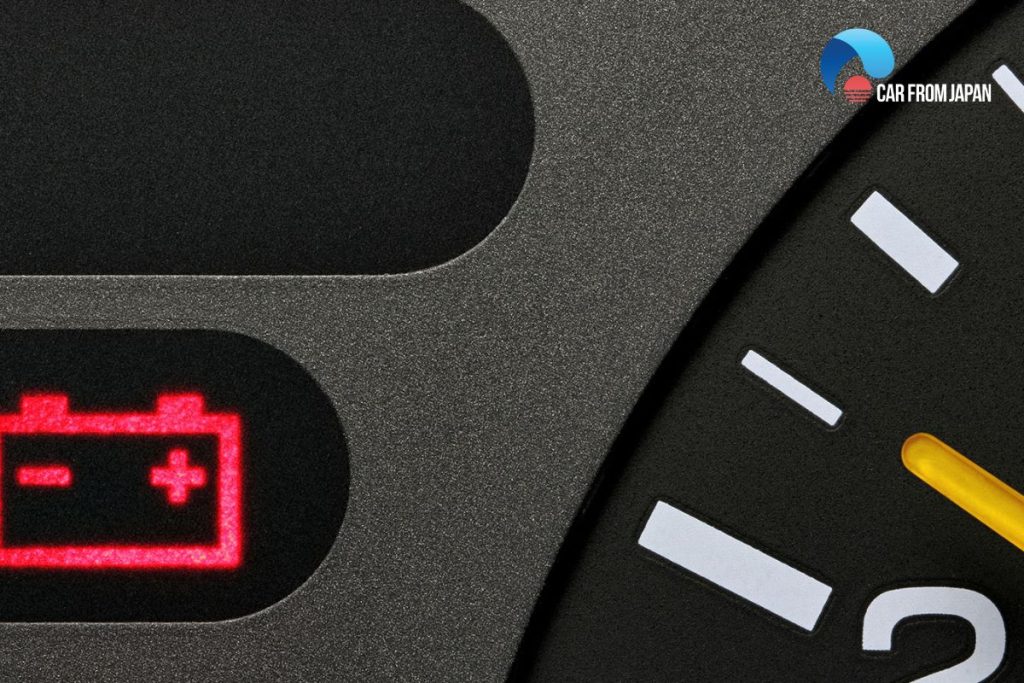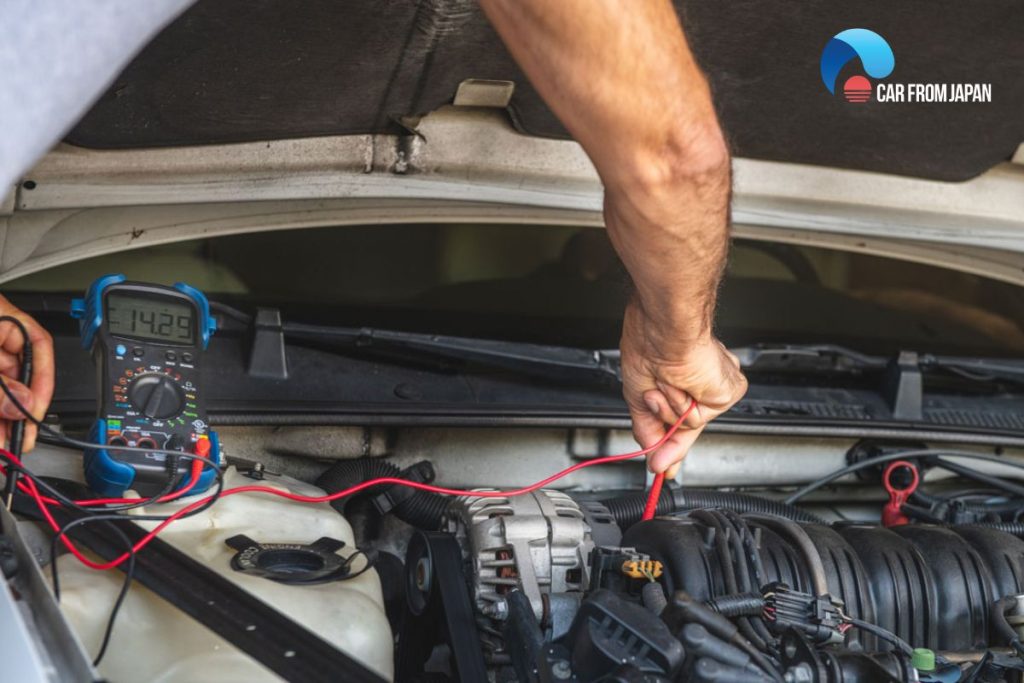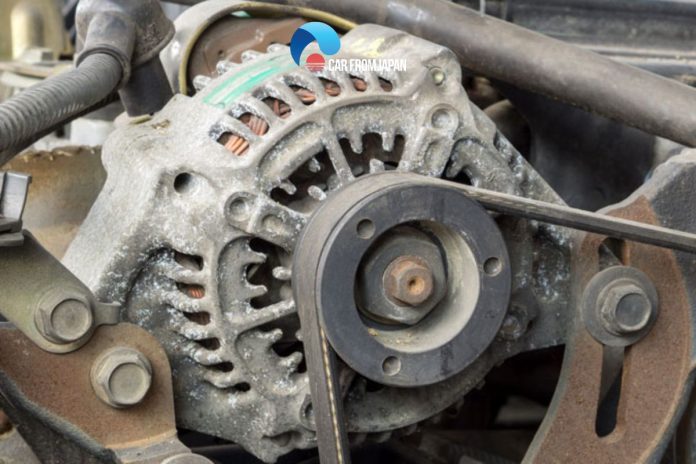Have you ever experienced signs that your car battery is weak or failed to charge even if this is the new one? Whether an alternator can be a culprit or not?
Let’s go through this guide to find out the common reasons why your alternator not charging battery and simple steps to solve this problem.
Contents
The Main Functions Of A Car Alternator
The alternator is one of the 5 main parts of the car’s electrical system, functioning as a machine that generates power to supply the battery, serving the operation of load devices and electrical equipment.
Car alternators generate electricity by converting mechanical energy. In particular, the source of mechanical energy can be from internal combustion engines, solar energy.
If you were to try to start your vehicle without an alternator, the battery alone would not be able to produce enough power to get your engine running even if you have a new car battery.
The alternator is necessary for keeping the battery recharged and alternating the electrical current through many components of your car.
A malfunctioning car alternator will affect the charging process and battery operation. At the same time, the electrical equipment on the car also operates abnormally and cannot operate at maximum capacity.
So why is my car alternator not charging battery? Let’s find out the causes in the next part.
Alternator Not Charging Battery: 6 Common Reasons
If the car alternator stops charging your battery, it’s tantamount that your car can’t start.
However, if you are lucky enough, in some situations, your car will probably run for about 10 minutes, but after that, the power will be cut off immediately. Knowing the reasons will help you diagnose the exact problem and possibly resolve it.
Generally, a common cause of the alternator not charging is minor wear or corrosion. Virtually all mechanical failures, whether it is brush wear or bearing failure, are a result of extended service life.
Modern alternators are equipped with sealed (maintenance-free) bearings that only need to be replaced after a certain time or number of mileages.
The same applies to the electrical part – often the entire device must be replaced. Besides these causes, some other reasons can be considered and checked.
Blown fuse
Certain models have alternators dependent on a particular fuse to operate. However, sometimes, this fuse can blow due to a power surge or simply from old age. At this time, your alternator will no longer charge the battery.
But please remember that not all of them have fuses, so you have to check the owner’s manual to see whether your alternator needs the fuses or not. After that, we will give the exact diagnosis.
Bad alternator
Another common problem could be that the alternator is not working or due to connected incorrectly. To test this, you could apply a multimeter in Voltage mode. Starting your car and then using a multimeter to check the voltage of the car battery.

The normal number should be around 13 to 14.5 Volts, if it is below this try revving the motor a few times to see if the Voltage increases or remains low. If the Voltage does not exceed 12.5 Volts, the battery will not be charged and the alternator will not operate.
A good alternator designed correctly for your engine will provide the Charging Voltage as described even at idle rpm, though it can drop below 13 V.
Bad alternator brush
Carbon brushes are a small part of the alternator but play a big role. Because it is a conductive material and is responsible for transmitting electricity, connecting electricity from the static part (Stator) to the rotating part (Roto).
When the alternator brush is damaged, the electromagnetic connection between the above two parts will be interrupted. Carbon brushes often experience problems such as oxidation due to long-term use carbon brushes are worn, and brush springs are broken.
Stator winding issues
The stator coil consists of a core and coil placed in the front frame. It is responsible for generating 3-phase alternating current thanks to the change in magnetic flux of the rotating rotor.
When this part is broken or touches ground, electricity will not be generated and electricity generation will not be able to provide energy for many systems.
Alternator rotor
The rotor is a magnet inside the stator coil. It is responsible for creating a variable magnetic field inside the stator coil. The magnetic field creates an interaction with the stator winding and generates electricity.
When the rotor coil is damaged, the magnetic field is not created and no current is generated, leading to other functions of the car being affected.
Regulator
As the name suggests, the regulator is responsible for regulating the voltage of the current emitted from the generator system to always be stable.
If this part is damaged, the electric current will be weak and strong, causing other parts of the vehicle such as the lighting system and car starter to flicker.
Related Post: The Common Reasons for Car Battery Won’t Hold Charge
Beware These Symptoms Of A Bad Alternator
If you detect one of the symptoms below, you need to get your alternator checked.
Difficult when starting
If you turn the key to start but the engine cranks weakly, and it takes a long time to start, it could be due to a faulty alternator, causing the battery not to be charged and there is not enough voltage to start the motor.
Promptly taking your car to a trusted mechanic to have checked is the safe method. In this case, you also need to turn off some electrical equipment like AC, radio, or headlights to save power.
The battery light turns on
Normally when starting the engine, the battery light will turn off to notify the system of normal operation.
But when the car is driving and the battery indicator light is still on, it may be due to a weak, damaged battery or a problem with the battery charging system. The indicator light is on to notify of this malfunction.

Dim headlights
Because the alternator provides power for the vehicle’s accessories, lighting system, etc. When this part has a problem, the headlight system will be weak, not bright, and flicker.
Therefore, if the lights on the car are dimmer than usual and flicker, it’s a sign to tell that you have a bad alternator.
Strange odor
This odor may be due to the wire heating up because the moving pulley is not aligned or does not rotate freely.
From there, a large friction force is created on the belt and this part of the belt heats up, creating an unpleasant smell like burning rubber. And then, the car alternator may be broken.
The alternator is an important part that helps charge the battery and provides power to all electrical devices in the car.
If this device has a problem, it will greatly affect the operation and movement of the vehicle. Knowing how to check a car generator will help drivers know its condition so they can handle it promptly.
But testing the alternator is quite a complex process, it requires an experienced technical staff and help from various types of tools to know the exact cause.
However, if you have a basic ground in the auto industry, you can completely do this process by yourself.
Read More: How to Test a Car Battery – 6 Interesting Ways You Should Know
How To Test A Car Alternator?
To check the alternator, you need to prepare a professional testing kit and a voltmeter.

Following these 3 steps to test your alternator properly.
Step 1: Test the battery
To check the battery, we use a voltmeter. Attach the red lead of the voltmeter to the positive terminal of the battery, and attach the black terminal of the voltmeter to the negative terminal of the battery. Then reading parameters.
If the voltage is greater than 12V, we can proceed to the next step. On the contrary, if it is lower than 12V, you need to charge the battery and re-measure the voltage after charging.
Step 2: Start the car
After measuring the battery voltage, step on the accelerator to let the engine rotate. You should increase the throttle to a speed of 2,000 rpm to let the engine warm up after a long period of inactivity.
Step 3: Keep the engine running steadily and check the battery voltage
Keep the engine running steadily and check the battery voltage. Continue reading the voltmeter value. If the car battery voltage is between 13 – 14.5V, the alternator is normal.
If the voltage value is lower or exceeds the threshold of 13 – 14.5V, it means the generator is broken or has a problem.
Besides, it is necessary to continue to check the operation of electricity-consuming devices such as air conditioners or lights to see if they are operating normally.
Check Now: How to Test Alternator with Screwdriver At Home
How To Fix Alternator Not Charging
Detecting signs of damage to the vehicle, the recommended way to fix this situation is to take the vehicle to a repair garage so that technical staff can conduct an inspection, detect the correct disease, and treat it with the correct medication.
In case the car breaks down in the middle of the road, or if the alternator is suspected to be damaged, causing the battery to run out of power and making it impossible to start the engine and drive, you can call traffic rescue for assistance or test the battery yourself. regulations if possible.
Besides, you also need to maintain the electrical system, as well as the alternator regularly, periodically after every 3000 km – 5000 km of running (equivalent to about 3-6 months) to increase longevity and limit and promptly detect damage to the generator as soon as possible.
How To Keep Your Car Alternator In Good Condition
Mastering the following tips will help drivers keep their car alternator in the ideal operating condition.
Regular maintenance
When performing regular maintenance, all parts of the vehicle will be checked. If the alternator has a problem, it will be promptly maintained/repaired to avoid serious damage.
Limit using multiple electrical systems at the same time
Using multiple electrical loads at the same time will cause the alternator to operate less stably. Therefore, this needs to be limited to maintain the operation and durability of the car alternator.
Replace the belt at the right time
One of the keys to lasting the lifespan of the alternator is checking the belt. Since it’s made of rubber, the belt will fray and crack over time, typically between 40,000 and 70,000 miles – although there’s no specific timetable.
That’s why it’s important to check the belt when performing routine maintenance. Replace it after noticing the first signs of aging as it can cause damage to your engine.
New alternator not charging battery: Learn more about the fixing process with Auto Repair Tips!
Wrapping Up
We have provided you with information related to the alternator not charging battery and how to fix this problem. At the same time, you should apply tips to keep this part in the best condition.
So we hope that all this information will be somehow useful for you if you encounter the same problem with the car alternator. If you have any questions, don’t hesitate to leave your comments in the comment box below.



